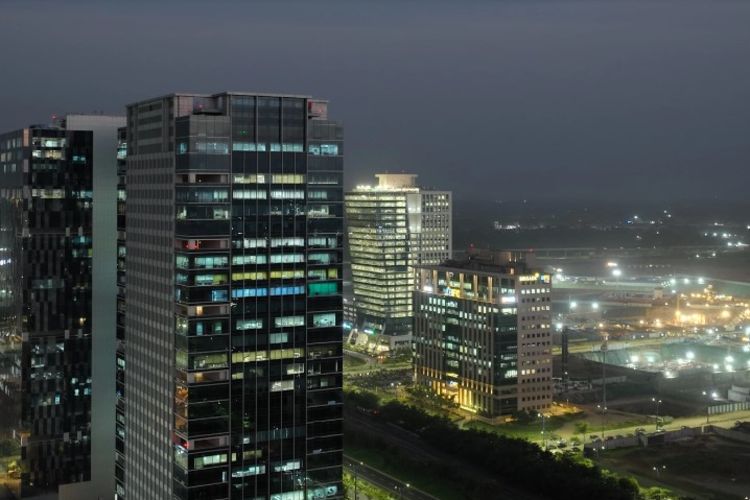
From Shenzhen to Jebel Ali, special economic zones have powered export-led booms and anchored industrial revolutions. India was an early adopter of the model, setting up its first export processing zone in Kandla as early as 1965. Yet, nearly six decades later, the country is still refining the formula. The latest changes to SEZ rules signal a renewed push—this time with an eye on high-tech sectors like semiconductors, electronics, and AI.
In a significant shift, the minimum land requirement for setting up special economic zones units has been slashed—from 50 hectares to just 10. For multi-product zones in smaller and hilly states like Nagaland, Manipur, Uttarakhand, and Goa, the threshold has been reduced to 4 hectares. The change, formalised through a recent gazette notification, is intended to lower entry barriers for capital-intensive sectors and catalyse foreign direct investment (FDI).
READ | Aerospace manufacturing: India eyes foothold in global market
This is especially crucial for industries such as semiconductor fabrication, lithium-ion battery production, display modules, and IT hardware—where gestation periods are long and scale often limited to a few highly automated units. Smaller land requirements can make India a more agile and attractive destination in the global electronics value chain.
Aligning SEZ rules with the semiconductor mission
The policy adjustments dovetail with the Indian Semiconductor Mission (ISM), launched in 2021 under the Production-Linked Incentive—PLI scheme. By allowing the value of free-of-cost (FOC) goods to count towards the crucial Net Foreign Exchange (NFE) calculations, the new rules help firms meet compliance norms that unlock benefits like duty-free imports.
Equally important, special economic zones are now allowed to source capital goods and raw materials from the domestic market, reducing import dependency. Finished goods can be sold in Domestic Tariff Areas (DTAs) on payment of applicable duties, or transferred to Free Trade and Warehousing Zones (FTWZs), even across different special economic zones—easing constraints on supply chains.
A history of promise and pitfalls
India’s special economic zones rules has gone through multiple iterations. The formal policy was launched in 2000, and codified through the SEZ Act of 2005 and Rules of 2006. Early gains, particularly in IT/ITES sectors, led to a surge in approvals—over 580 by 2010. Yet, implementation remained uneven. Challenges like land acquisition bottlenecks, poor infrastructure, and regional imbalances surfaced by the early 2010s. Reforms followed, most notably the Baba Kalyani Committee’s 2018 recommendations to integrate special economic zones with global value chains and sunset outdated tax incentives.
Since 2020, the focus has shifted decisively toward high-tech manufacturing. The proposed Development of Enterprise and Services Hub (DESH) Bill, 2022, aims to overhaul the special economic zones architecture, promising streamlined approvals, services-led exports, and alignment with global best practices. The inclusion of special economic zones under the Remission of Duties and Taxes on Exported Products (RoDTEP) scheme further levels the playing field for sectors like engineering, pharmaceuticals, textiles, chemicals, and food processing.
In a bid to stay ahead of the curve, the Chhattisgarh government is now planning the country’s first artificial intelligence-based special economic zones in Nava Raipur. The proposed zone will exclusively support AI and data infrastructure, aided by legal and tax exemptions to attract R&D-heavy firms. If successful, it could serve as a template for next-generation special economic zones focused on frontier technologies.
Mixed results, unfinished reforms
Despite 280 operational special economic zones and investments exceeding Rs 6.7 lakh crore, the model’s performance has been patchy. While some zones have become vibrant export hubs, others languish—plagued by bureaucratic hurdles, regulatory overlaps, and underutilised land. The promise of a single-window clearance often remains more rhetorical than real.
A recent Grant Thornton report reveals the need for anchor investors and deeper incentives for high-tech manufacturing. The absence of ecosystem support—such as logistics, reliable power, and skilled labour—continues to limit scale and productivity. Manufacturers frequently face clearance delays due to fragmented oversight by multiple departments, eroding the core value proposition of the special economic zones model.
Learning from global leaders
India is not alone in banking on special economic zones. Countries across Africa are leveraging them to attract capital and scale exports. Global success stories—like the Shenzhen in China, Pomeranian in Poland, Coyol Free Zone in Costa Rica, and the Hamriyah Free Zone in the UAE—have shown that these zones work when backed by infrastructure, policy coherence, and global market connectivity.
India must move beyond land incentives and tax breaks. A successful special economic zones strategy requires a holistic industrial vision: skilled workforce pipelines, robust R&D incentives, seamless logistics, and integration into global supply chains.
The recent tweaks are a step in the right direction. But unless long-standing issues of infrastructure, regulatory clarity, and investor confidence are addressed, special economic zones will continue to yield sub-optimal returns. India’s ambition to become a global hub for electronics and high-tech manufacturing depends on whether its economic zones can match the flexibility and scale of their international counterparts.
Done right, special economic zones could help India reconfigure its place in global value chains. Done poorly, they risk becoming enclaves of potential, forever waiting for takeoff.
